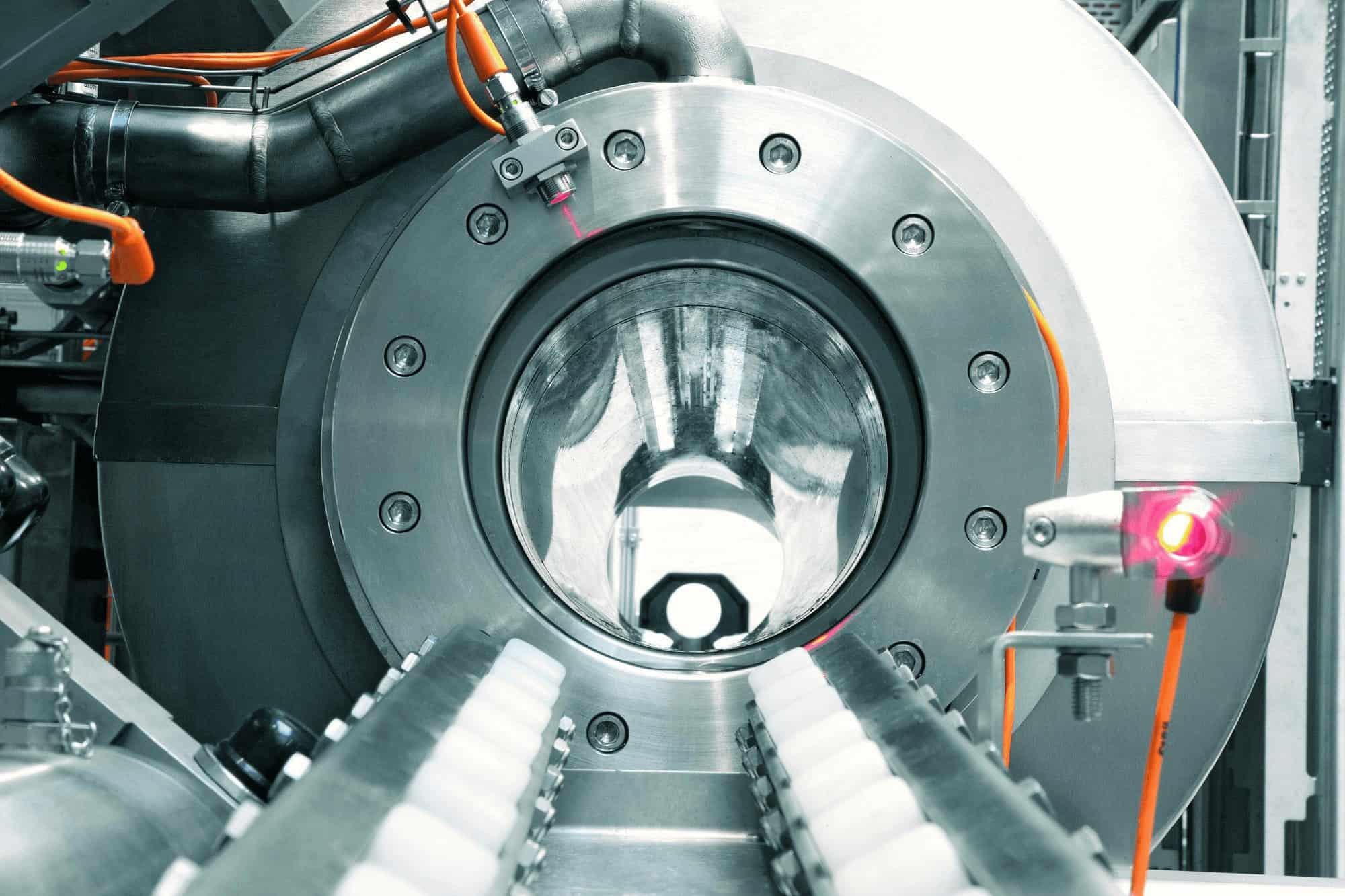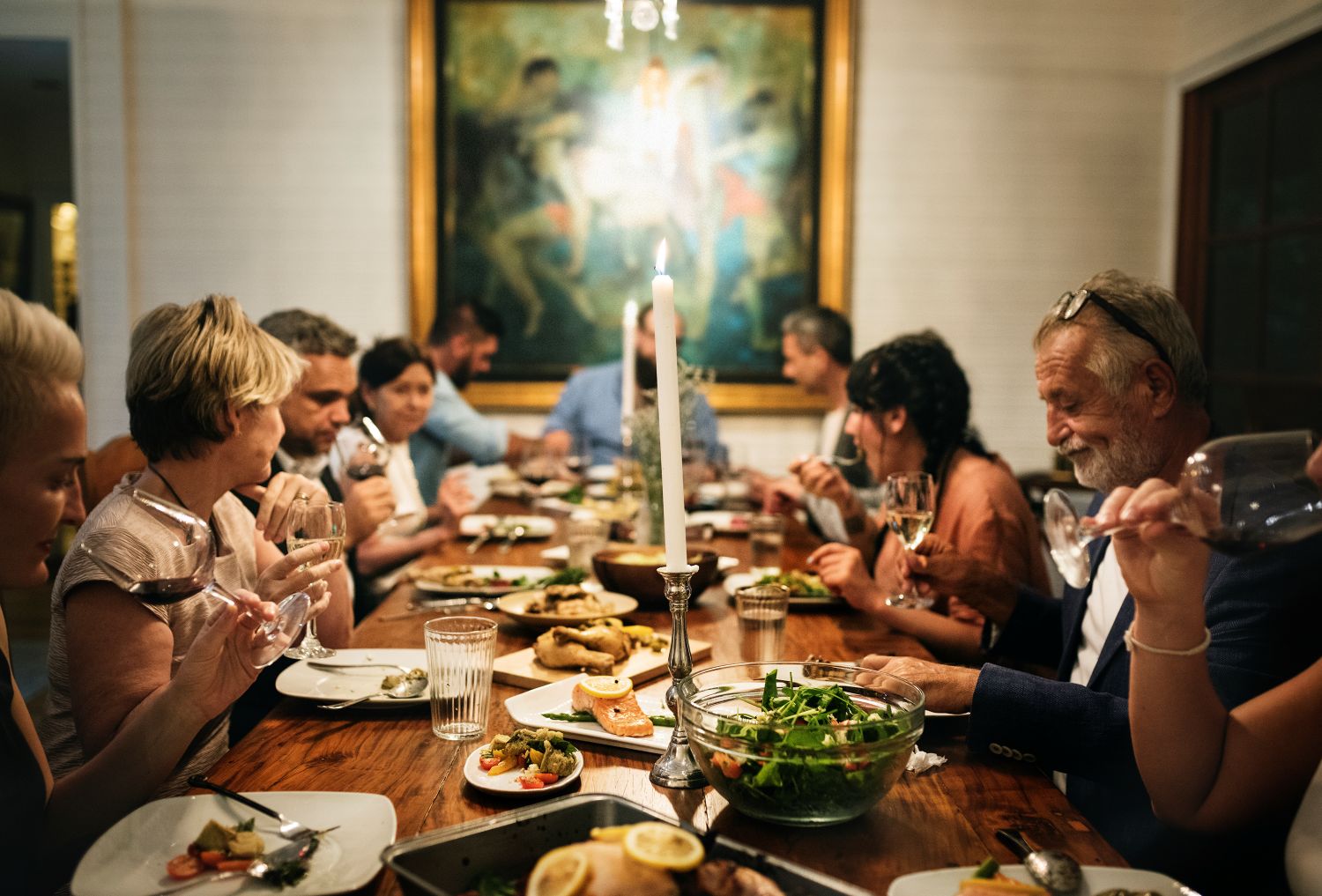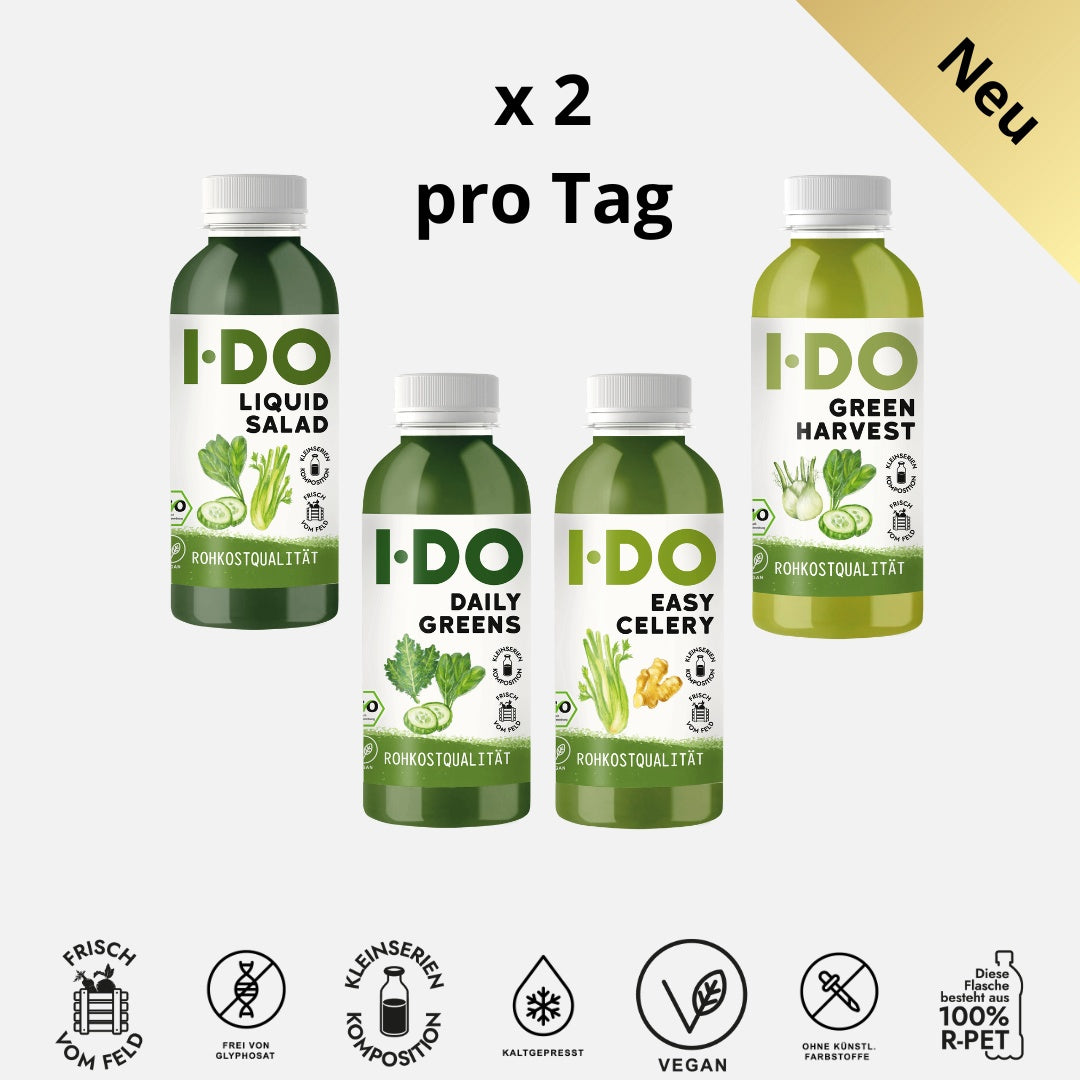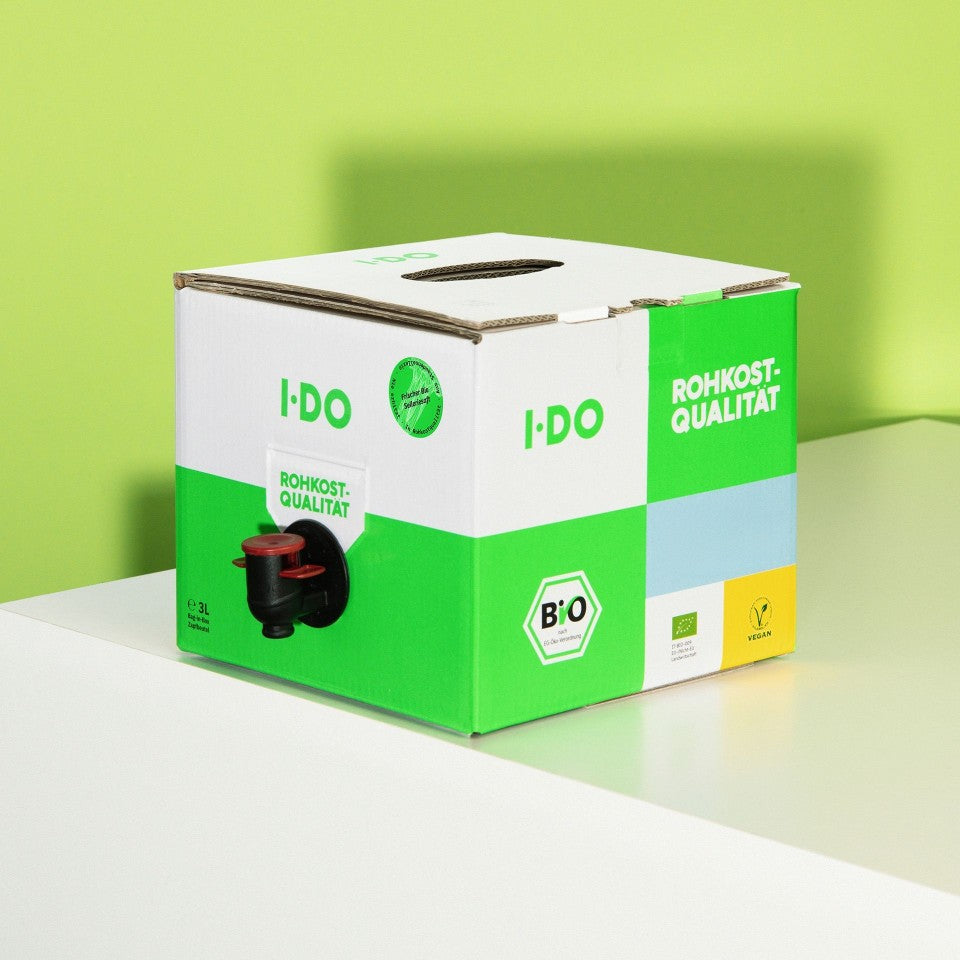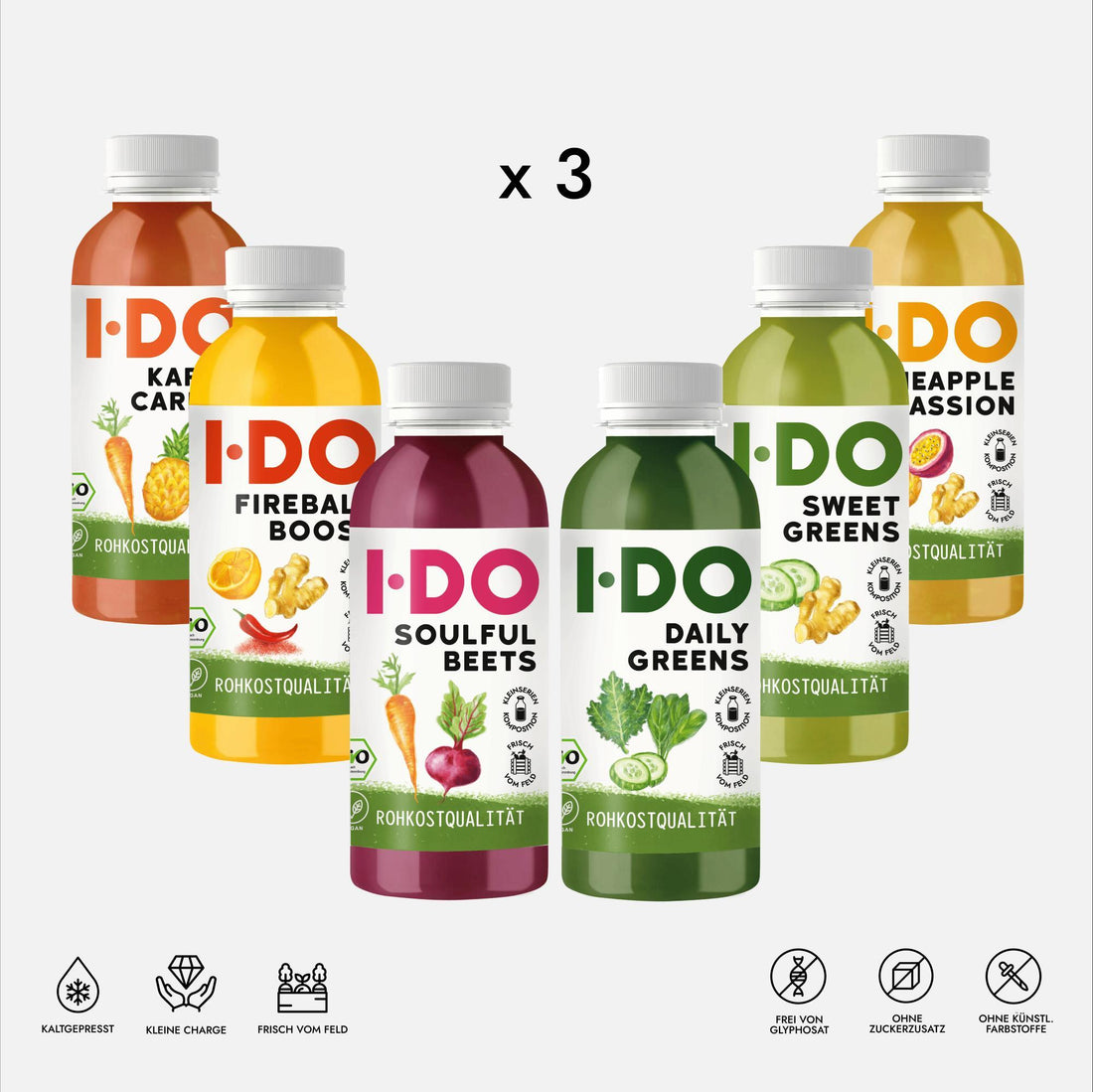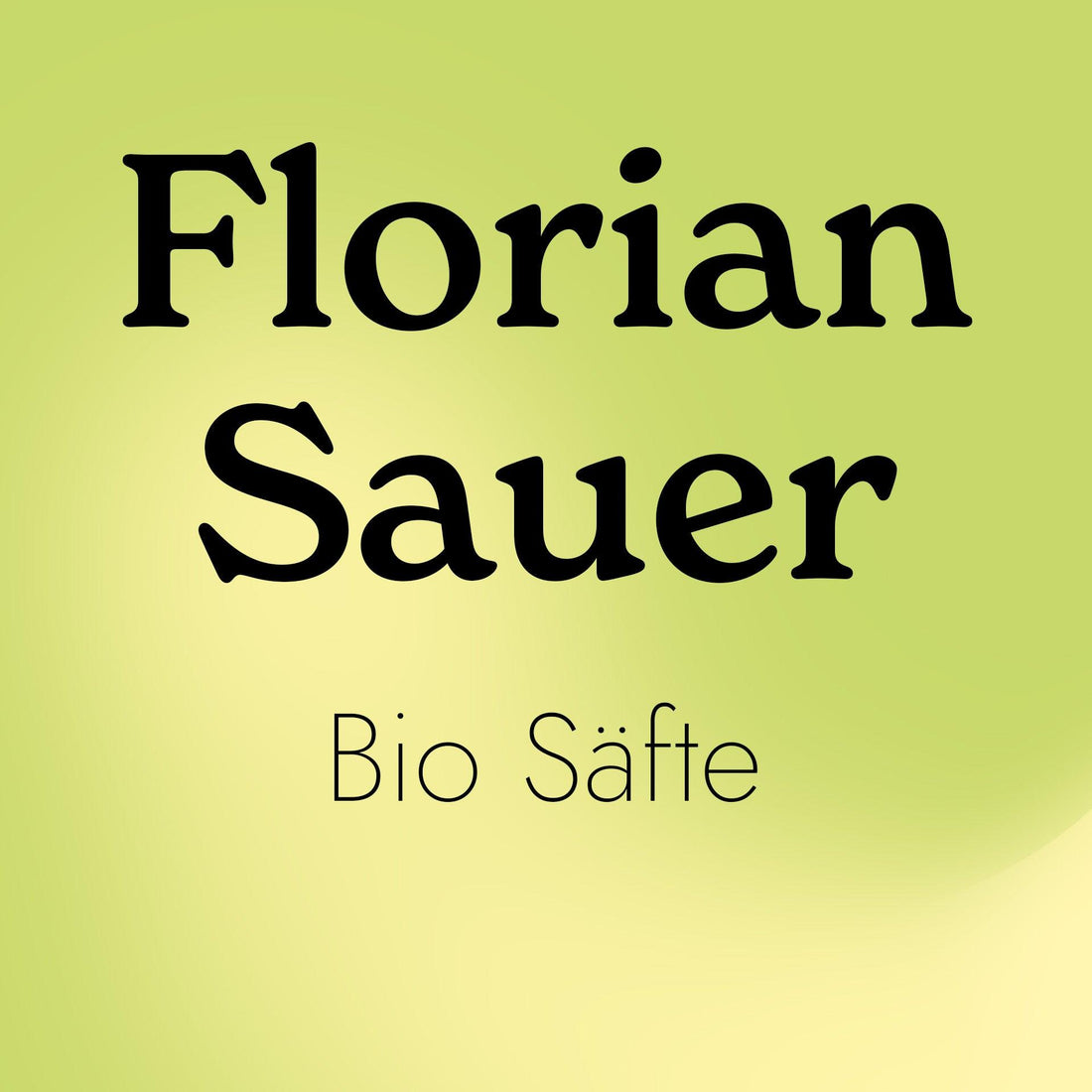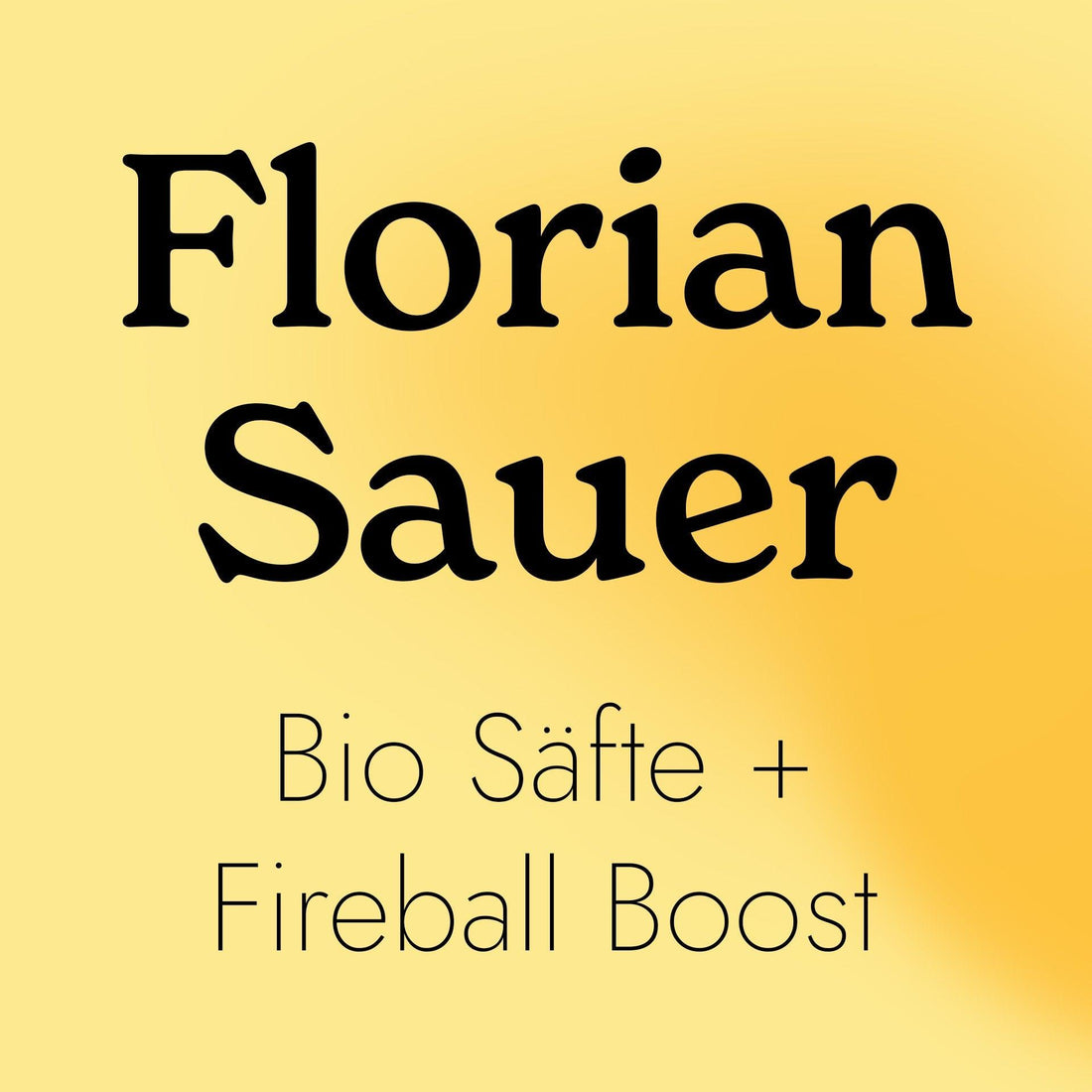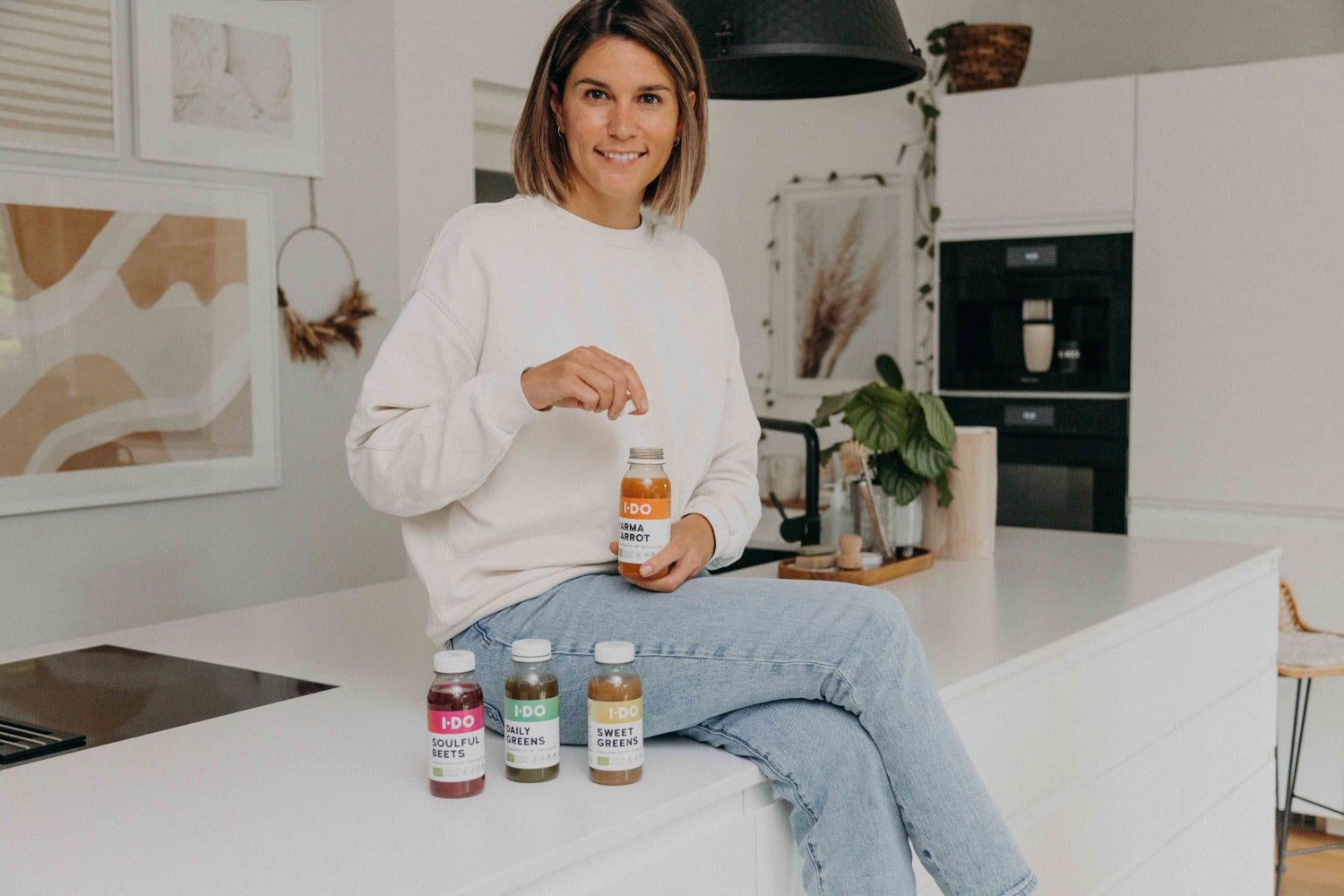Pascalization, bridgmanization, or high pressure processing (HPP) , is a method of preserving food without heating it. The product is placed under very high pressure in the packaging, which leads to the inactivation of a large number of the microorganisms living there. The process is named after Blaise Pascal, a French scientist who studied the effects of pressure on liquids as early as the 17th century. During the pascalization process, up to 6,000 bar (≈ 87,000 psi) pressure is applied to the already packaged product, in our case the juice. With the help of this high-tech method, we manage to make you the best, freshest and most flavorful juice without you having to forego the convenience of a longer shelf life - without any heat or chemicals and therefore without any loss of quality.
We are the first company in Germany to use HPP to gently extend the shelf life of our fresh juices. We would like to explain to you here why we are convinced of HPP: The best way to understand this is to look at what happens to the juice from the first second after pressing. Once the juice is pressed, the naturally occurring bacteria in the juice multiply. At the same time, air and light ensure that the content of vitamins, enzymes and other nutrients immediately decreases. And the multiplying bacteria also have to feed on something. Namely, the valuable nutrients that you actually wanted to consume with your juice. The juice loses a lot of nutrients, vitamins, enzymes and therefore quality in the first few hours after pressing. In our opinion, an unpasteurized, non-HPP-treated juice is no longer worth drinking after just a few hours, or at the latest after a day. HPP stops this decay process without the use of heat or chemicals. During the HPP process, microorganisms such as bacteria are deactivated, meaning they die and can no longer reproduce. Since the process takes place in the finished, sealed bottle, the juice itself never comes into contact with the machine or the pressure medium (water). Since the bottle is only opened again after the procedure at the customer's premises, there is no risk of new contamination with bacteria or oxidation of vitamins. That's why HPP has been known as a premium process in the USA and Japan for several years and is used for many high-quality products. Customers there also appreciate the advantages of the process and are even willing to pay an extra charge for it. It is our belief that if a juice is not drunk within the first 12 hours of production, HPP is the only way to maintain the high quality and food safety of the juice. We formed this opinion after extensively examining various scientific studies that were published in top international publications. Below you will read something about HPP from a scientific perspective. Yeah, science b*#&!
The pressure chamber of a high pressure pascalization system. Up to 6000 bar pressure is applied inside. At the deepest point of the Mariana Trench, eleven kilometers below the surface of the Western Pacific, there is a pressure of just under 1100 bar! Such high pressures can only be achieved with high technology. (Source: Multivac )
How does HPP work?
With HPP, the juices in their final packaging are put under pressure (approx. 6000 bar/600Mpa) in a water bath. This pressure is unable to break covalent bonds or create new compounds through the degradation of molecules (Cheftel 1992). However, the pressure can destroy weak bonds. Such weak bonds are found in microorganisms such as bacteria, but not in “simpler” compounds such as vitamins (Cheftel 1992). That's why HPP can inactivate bacteria WITHOUT noticeably attacking vitamins or significantly influencing enzyme activity.
Why do the juices last longer through the use of HPP?
The shelf life of the juices is extended by inactivating bacteria in the juice. A measure commonly used for food safety is the total aerobic microflora. After just 5 minutes under pressure, this number is reduced many times over in freshly squeezed orange and peach juice (Erkmen et al. 2004, Bull et al. 2004). This reduction logically has an effect over the entire lifespan of the juice. Timmermans et al (2011) show that the total aerobic bacteria count was at a consistently low level even after 30 days. A comparable reduction is also shown for the levels of E. coli and Salmonella in the juice (Teo et al., 2001). Of course, these do not end up in the juice in our production, which is approved according to the IFS standard, in which we pay strict attention to all hygiene regulations and compliance with the HAACP concept. Since we, and no other manufacturer of cold-pressed juices, cannot rule out contamination of the raw materials with these bacteria, we consider the use of HPP to be an incredibly important contribution to the safety of our juices and therefore to your health.
What happens to the nutrients, especially the vitamins?
As already mentioned, HPP does not have a significant impact on the vitamins and nutrients in the juice. When using HPP, a small part of the vitamins it contains is initially lost. According to current studies, the vitamin content of the juice after using HPP is still around 90% of that of freshly pressed juice (Ferrari et al., 2010; Liu et al., 2010; Moreno et al., 2010). That sounds like a relatively big loss at first, but it is put into perspective after just a few hours. The fresh juice loses important nutrients from the first minute, so that after just a few hours after using HPP, the vitamin content is higher than in a juice that has not been consumed with HPP (Barbara et al., 2012). At the same time, the pressure applied during HPP increases the activity of various enzymes and secondary plant substances in the juice, as studies have shown, for example, for an important antioxidant group of plant substances (catechins) or polyphenols (Moreno et al., 2013). Overall, according to the current state of science, HPP does not harm the juice. With this conclusion, Dr. Jennifer McEntire from the IFT Institute compiled a larger study on the subject of HPP: “For the enzymes and nutrients we're interested in, there definitely is, from my perspective, ample evidence to show that HPP is able to maintain the fresh, natural, raw characteristics of the product” (Interview for well&good magazine). HPP is a gentle method of extending the shelf life of our fresh juice. And thus give you even more comfort and flexibility. No matter whether you want to put a good portion of juice in the fridge, want to do a longer cleanse or want to take your juices with you when traveling - thanks to HPP, the juice lasts longer without suffering any loss in quality or nutritional content. Healthy. Practical. Yummy.
Sources
- Barba, F.J. et al. Evaluation of quality changes of blueberry juice during refrigerated storage after high pressure and pulsed electric fields processing. Innovative food science and emerging technologies 14 (2012) 18-24
- Bull, MK et al. The effect of high pressure processing on the microbial, physical and chemical properties of Valencia and Navel orange juice. Innovative food science and emerging technologies 5, (2004) 135-149
- Cheftel, J.C. (1992). Effects of high hydrostatic pressure on food components: An overview. In C. Balny, R. Hayashi, KK. Heremans & P. Masson (Eds), High Pressure and Biotecnology, Colloque INSERM (Vol. 224) 195-209
- Erkmen O. & Dogan, OC. Effects of ultra-high hydrostatic pressure on Listeria monocytogenes and natural flora in broth, milk and fruit juices. International journal of food science and technology, 39, (2004) 91-97
- Ferrari et al. The application of high hydrostatic pressure for the stabilization of functional foods: Pomegranate juice. Journal of Food Engineering 100 (2010) 245-253
- Goh et al. Baroprotective effect of increased solute concentrations on yeast and molds during high pressure processing. Innovative food science and technologies, 8 (2007) 535-542
- Mandelová, L. and Totusek, J. Broccoli juice treated by high pressure: chemoprotective effects of sulforaphane and indole-3-carbinol. High Pressure Research 27(1), (2007), 151 – 156
- Liu et al. Effect of high hydrostatic pressure on overall quality parameters of watermelon juice. Food Science and Technology International, 19:3 (2013) 197 - 207
- Matser et al. How to compare novel and conventional processing methods in new product development: A case study on orange juice. New food magazine 5 (2012) 35-38
- Moreno et al. Altas presiones en la elaboración de zumo de uva tinta. Tecnifood, marzo/abril (2013) 121-123
- Oxen & Knorr. Baroprotective effects of high solute concentrations against inactivation of Rhodotorula rubra. Food Science & Technology, 26, (1993) 220-223
- Queiroz, C. et al. Effect of high hydrostatic pressure on phenolic compounds, ascorbic acid and antioxidant activity in cashew apple juice. High Pressure Research 30(4), (2010), 507-513
- Teo et al. Effect of low temperature, high pressure treatment on the survival of Escherichia coli O157:H7 and Salmonella in unpasteurized fruit juices. Journal of food protection vol 64-No 8 (2001), 112-1127
- Timmermans, RAH et al. Comparing equivalent thermal, high pressure and pulsed electric field processes for mild pasteurization of orange juice. Part I: Impact on overall quality attributes, Innovative Food Science & Emerging Technologies, 12 (3), (2011) 235-243


